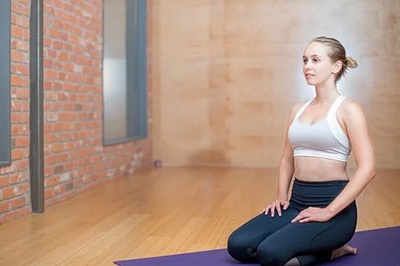
In my opinion, there are two types of yoga instructors: those who need or want to earn a living teaching yoga and those who do not. Anyone who relies on their income from teaching yoga to cover their expenses falls within the first category of teachers. They are the ones that either teach full-time to make a living or part-time to earn extra money while working another job. In any case, they rely on their income from teaching. The second type of teacher is someone who does not need to earn money from the lessons they teach because they have another work that serves as their primary source of income or because of other factors.
It’s critical to be aware of which category you fit into because it will influence your financial choices as a yoga teacher and your perception of your worth. As you may have noticed, many yoga instructors struggle to get paid what they are worth. There are a number of reasons why this pattern is frequent, but we’ll get to those causes shortly. Simply said, link up your friends, volunteer, and don’t be afraid of large discounts if you don’t need to earn money teaching yoga to sustain yourself. On the other hand, if you’re on the receiving end, we will show you how crucial it is to comprehend your worth and the motivation for recompense.
There is a really crucial question to ask yourself after considering where you fit in, particularly if you rely on the income you receive from teaching yoga. Would you like to pursue a profession in teaching yoga? Despite your unwavering passion for yoga, can you take it if it becomes your job? This is a legitimate struggle for many teachers. Some people find that over time, their love for their passion wanes when it becomes their job. Others, like myself, however, just cannot think of a finer career than earning a salary doing what they love. Think about it, then. Teaching yoga might still feel like a job, even if you don’t need the money to sustain yourself.

Yoga’s Commercialization
We first need to define the term “commercialization” before we can discuss the ethics of commercializing yoga. The process of introducing a service or product into commerce—the buying and selling of products and services—is known as commercialization. In other words, commercialization is the process of bringing a product or service to market, frequently from specialized markets into larger markets.
Let’s examine this phrase in light of American food production. After World War II, the production of food was commercialized in order to meet the demands of an expanding population. Okay, fair enough. Would you be against providing meals to all? Obviously not. Greed and exploitation are at the root of the problem of commercialization in the food manufacturing industry. Those in charge had other goals in mind than simply feeding the populace. Oh no, they wanted to dominate markets and generate great profits by transferring control of food production from small farmers to a select group of large-scale producers. We currently have a food system that serves the wealthiest people.

What does yoga have to do with any of this? We may compare the commercialization of yoga to that of agricultural production. Do we not want yoga to be accessible to all people, just like food? Yes, we do! We are aware of the power and wisdom of yoga, and nearly every teacher has chosen this career because they wish to help others experience the transformative power of yoga. Yoga should be accessible to everyone, rather than being reserved for ourselves or a small number of markets. The difficulty in commercializing something, however, is that someone will always look to seize an opportunity to make significant financial profits, similar to the difficulties in food production. Yoga has become more accessible thanks to the efforts of many people, businesses, and organizations.
Unfortunately, this is virtually always the case when making something available to the general public and can be viewed as a system byproduct. But as sincere and kind educators, what are we to do? Forget about sharing yoga’s message of love and light because some will use its rising notoriety, right? Are we meant to cease eating because food is produced commercially? No, that’s ridiculous. However, we may work to reform the system and choose wisely where and how to spend our money. The same is true with yoga.
Just because you practice yoga professionally doesn’t obligate you to participate in the abuse. As you spread the practice and widen your audience, you don’t have to compromise quality for quantity. It is possible to spread yoga among the general public without using elaborate, corporate strategies. Imagine yourself as a small farmer bringing sustainable practices back to American communities, cities, and towns (and the world). Your goal isn’t to market yoga to the masses by ruthlessly diluting and poisoning it from what it once was, am I right? Stay true to yourself and the teachings and avoid following those who are doing so. Yoga’s wisdom can’t be kept within us because we’re afraid it’ll be exploited. Regardless, that ship has sailed away. Instead, continue to learn about the discipline and apply the wisdom. Teach what you believe to be true and from the heart.
This world has to be healed as soon as possible. Both yoga and you are needed in our world.

Making Money by Pursuing Your Passion
Now let me address the stigma associated with money and yoga. We all have distinct relationships with money because of our varied upbringings and cultural backgrounds, which can include debt, abundance, love, fear, lack, envy, or want. You can see why it’s not surprising that many yoga teachers find it difficult to make ends meet when you combine it with the conflicting beliefs and attitudes about money in the yoga community.
The truth is, that modern yoga is going through a change right now. Yoga now is very different from the ancient practice, which was originally a school of thought or tradition passed down through sacred texts and spiritual teachings. While it is still true that the core of what we teach is internal transformation, the societies in which we live now don’t represent the values of the great teachers of old.
Humans have traded since the beginning of time, according to history. In order to subsist, people used to barter animals and crops for coins, then paper money, and today electronic debit and credit cards. The need for a reliable instrument to gauge the worth of the products and services being exchanged has persisted throughout, and whether you like it or not, that instrument is money.
Please read the previous sentence once more. Value is the main concept and a significant component in your formula for earning money while doing what you love. Value is a gauge of the potential benefits of a product or service. Yoga instructors frequently overlook or are unable to appreciate the importance of the service they offer. There’s no justification for feeling guilty or ashamed about getting paid for the worthwhile work we do. The trade is reasonable. Giving and receiving value are reciprocal.
The art of growing food and practicing medicine is as old as the original yoga, but these vocations have changed with the times as both farmers and doctors now trade their valued services for money to feed their families. It doesn’t serve us or our pupils now to evaluate ourselves and our financial worth in comparison to instructors from the past. We exchange money in our contemporary system of trade in exchange for goods and services, and we require that money in order to put food on our tables, clothing on our backs, and shelter over our heads.
You can still perform seva job, of course, but you must first ensure that your bare necessities are covered. Remember that people seek you out because they require the knowledge and experience you have worked very hard, and spent a lot of time and money acquiring. You should be able to make a living wage, and the more teachers who can do so, the more students we can serve. Comparable to putting on your own oxygen mask before helping others
You won’t be as likely to help all those other people who need you if you don’t put your mask on first (i.e., make a secure living to support yourself), as you’ll have to work 40 hours per week at another job to pay the bills. If you can’t keep your own head above water, you can’t completely exercise your potential of teaching and serving. I’ll repeat it to serve as a reminder: our world needs the calming effects of yoga, and we need you.
Do not miss a single article!
Submit your email id to get new articles directly into your email inbox!
- Why You Should Learn Pilates - August 27, 2022
- All You Need to Know about HIIT Workouts - August 23, 2022
- Hallmarks of A Good Fitness Trainer - August 20, 2022




Add Review